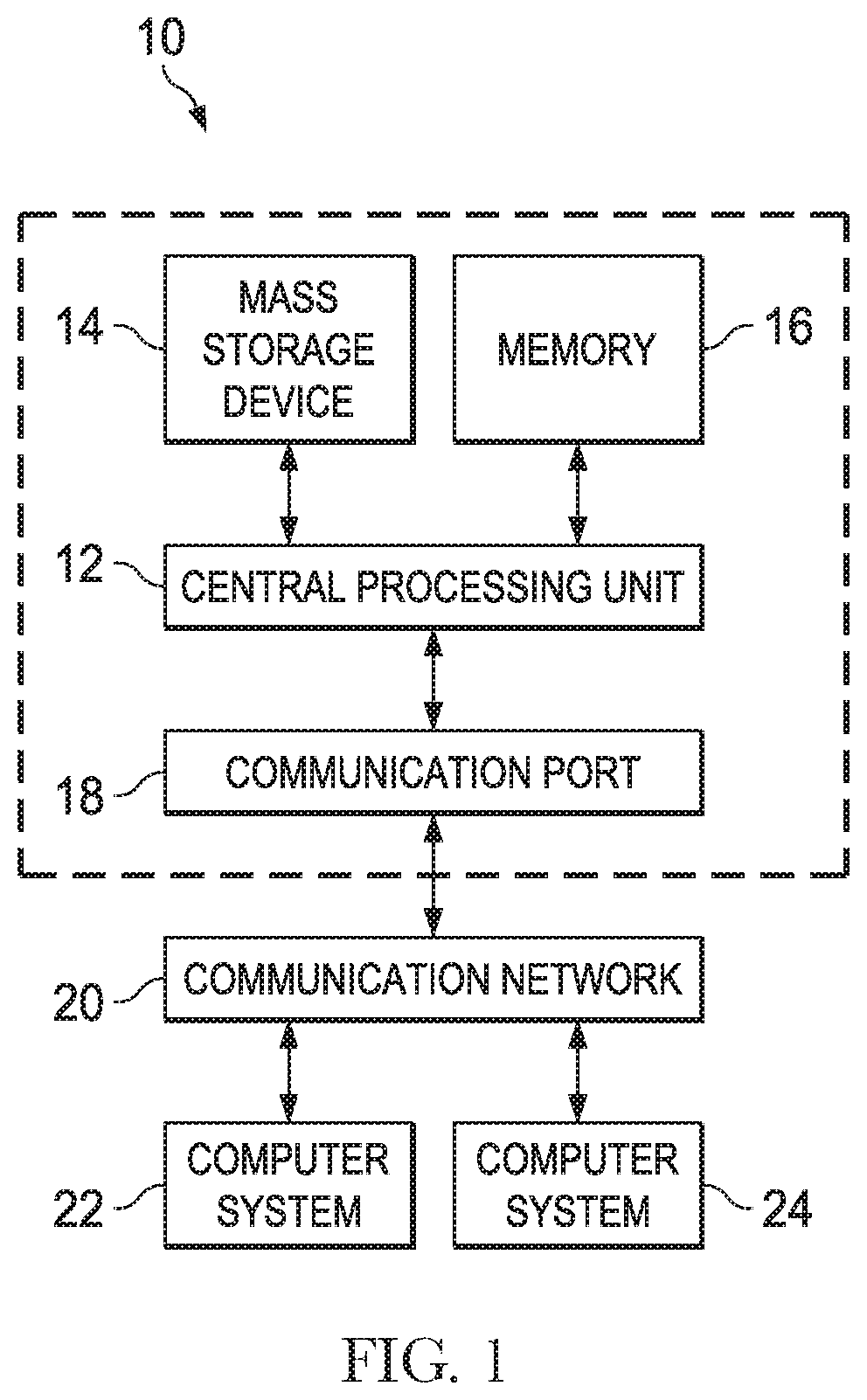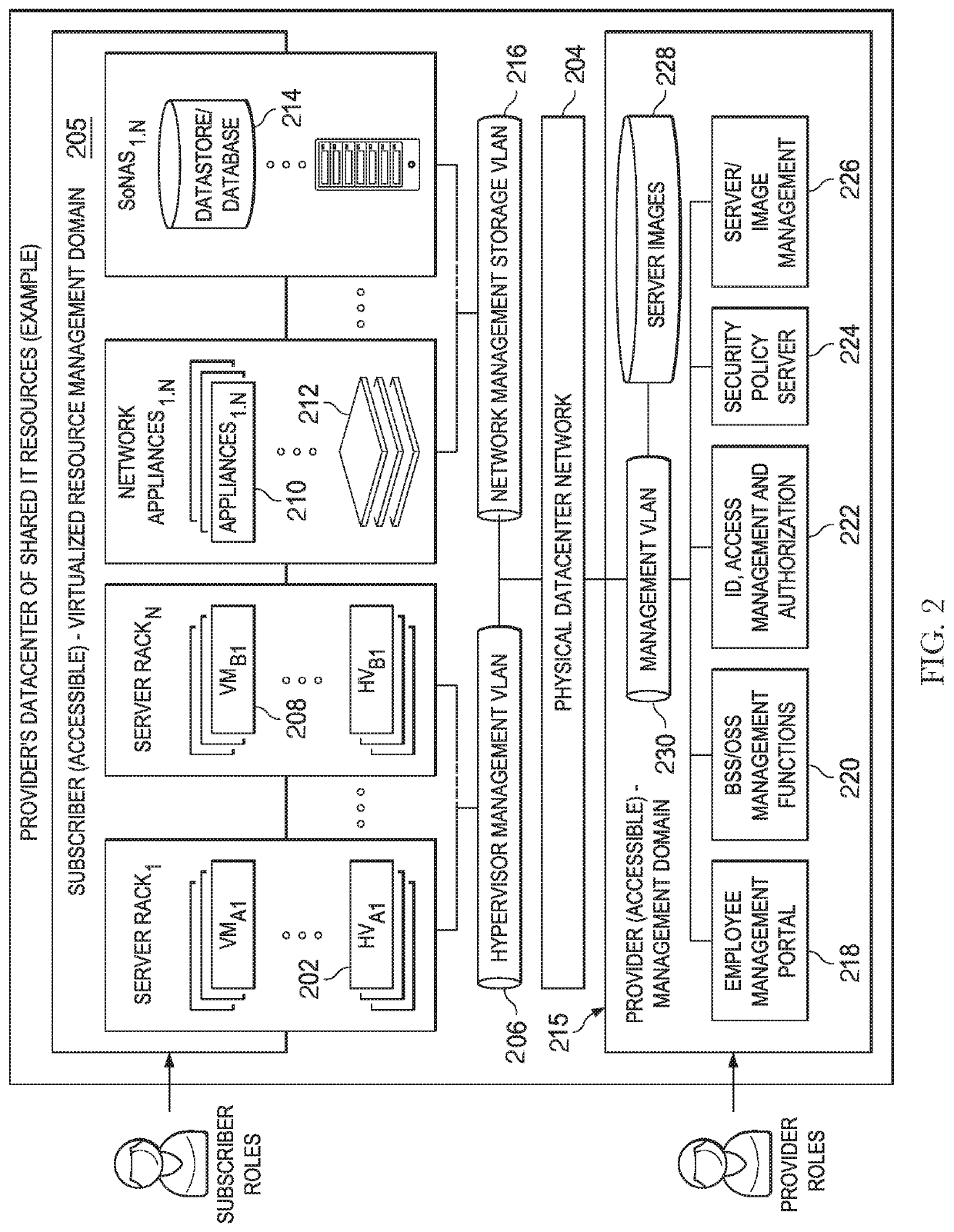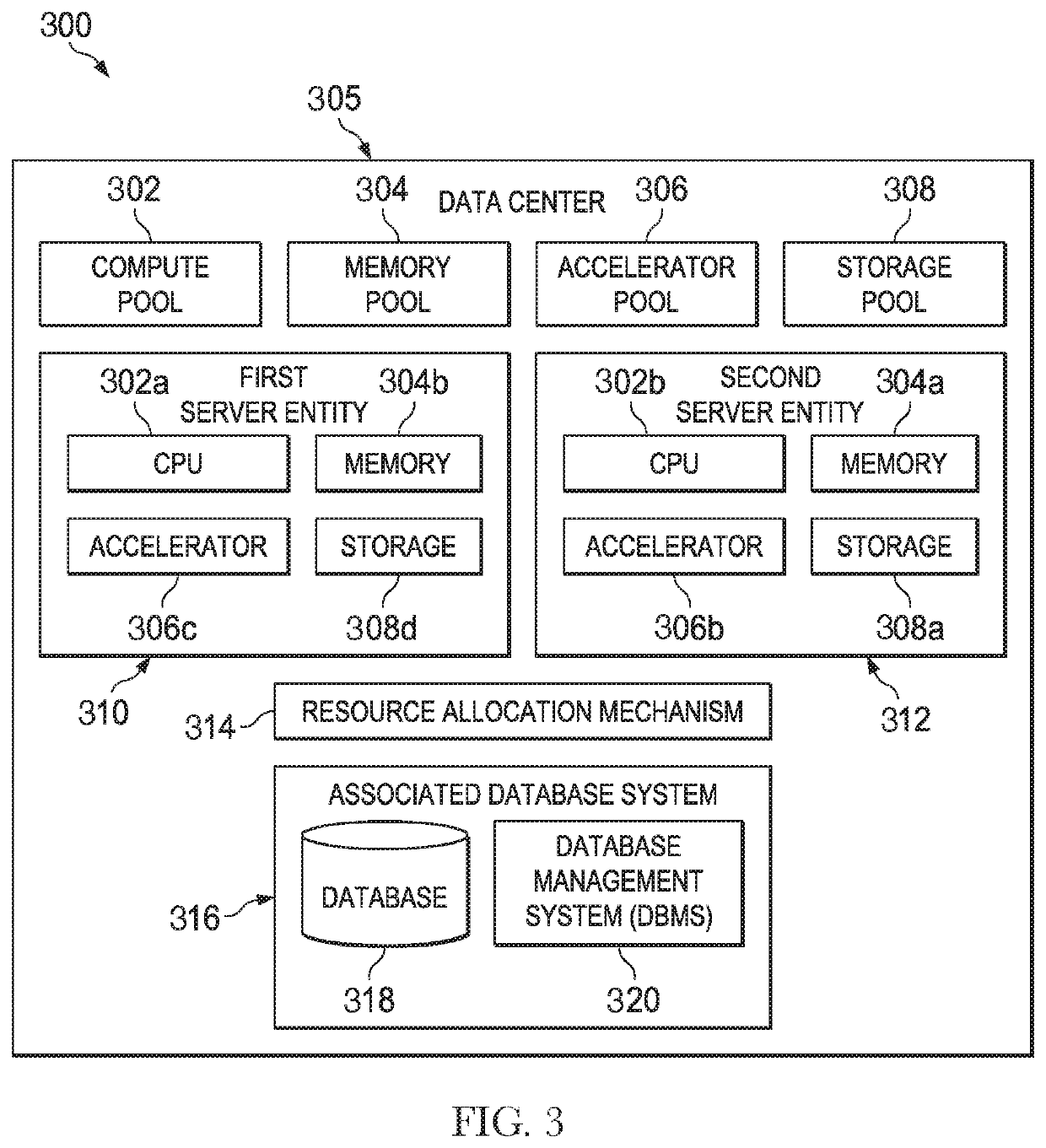Utilizing accelerators to accelerate data analytic workloads in disaggregated systems
a data analytic and accelerator technology, applied in the field of data processing systems, can solve the problems of low accelerator utilization, cost-effective provisioning and maintenance, etc., and achieve the effects of improving accelerator utilization, fine granularity and agileness
- Summary
- Abstract
- Description
- Claims
- Application Information
AI Technical Summary
Benefits of technology
Problems solved by technology
Method used
Image
Examples
Embodiment Construction
[0020]The techniques of this disclosure preferably are implemented within the context of a “disaggregated” compute system wherein a “disaggregated server”—sometimes referred to herein as a “server entity”—is composed or constitutes server resources selected from (or assigned from) shared server resource pools, namely, one or more of: a compute pool, a memory pool, an accelerator (e.g., FPGA) pool, a storage pool, and so forth. As the nomenclature suggests, a “compute” pool typically constitutes physical processors (such as CPUs), a “memory” pool typically constitutes physical memory devices (such as dual-inline-memory modules (DIMM)), etc. A given shared pool preferably includes just the particular resource types, but a particular resource pool may be composed of one or more resource sub-types. The notion of a “pool” is not intended to be limiting, as the common resources may be collected, aggregated or otherwise combined in any suitable manner. Further, a “pool” may be a dedicated ...
PUM
 Login to View More
Login to View More Abstract
Description
Claims
Application Information
 Login to View More
Login to View More - R&D
- Intellectual Property
- Life Sciences
- Materials
- Tech Scout
- Unparalleled Data Quality
- Higher Quality Content
- 60% Fewer Hallucinations
Browse by: Latest US Patents, China's latest patents, Technical Efficacy Thesaurus, Application Domain, Technology Topic, Popular Technical Reports.
© 2025 PatSnap. All rights reserved.Legal|Privacy policy|Modern Slavery Act Transparency Statement|Sitemap|About US| Contact US: help@patsnap.com



